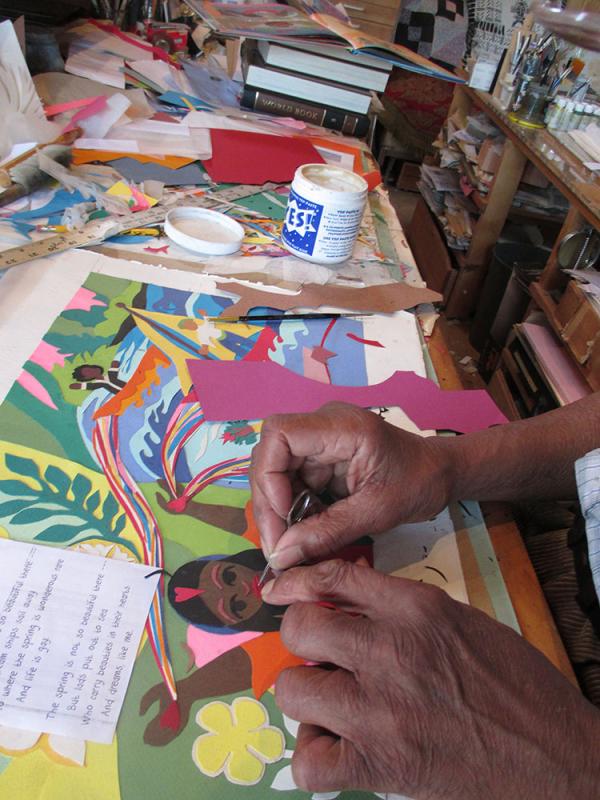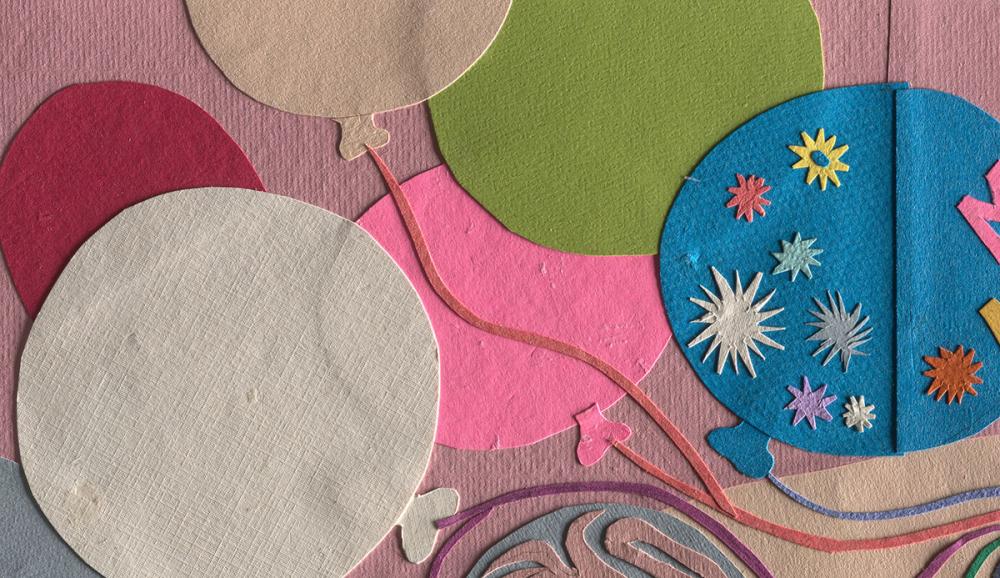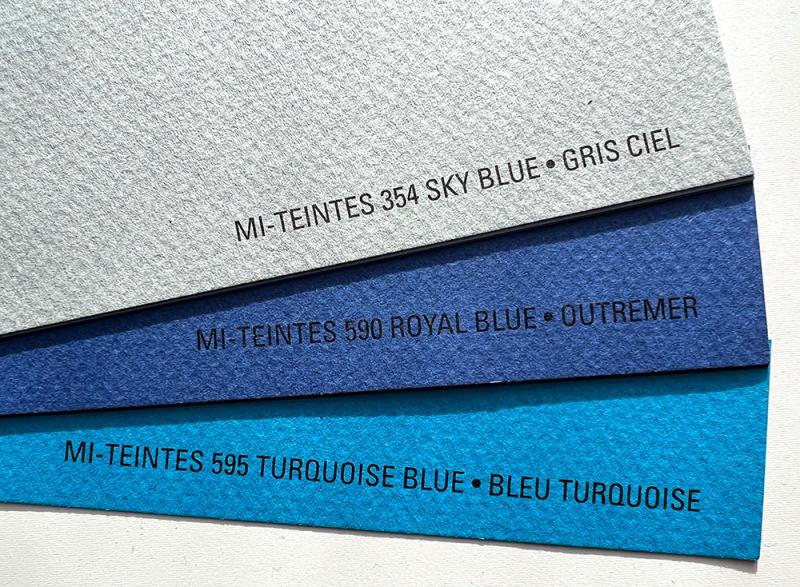This is a guest post by Lindsey Tyne, Conservation Librarian, NYU Libraries.
Ashley Bryan (1923–2022) used colored and hand-painted papers cut into the shapes of people, ships, water, land, and sky to create the collages that fill the pages of Sail Away, 2015, as printed images. When these eighteen collages (2021.25:1–18) entered the collection of the Morgan Library & Museum in 2021 as a gift of the Ashley Bryan Center, I was drawn to the rich colors and textures of the collage papers and immediately recognized one paper, Canson Mi-Teintes®, by its distinctive honeycomb texture. Bryan used this paper in a variety of colors and juxtaposed it with other smooth and textured papers as he overlapped the collage shapes to create the distinctive topographies that enliven the pages of the book. My initial recognition of the Canson paper sparked the exploration of Bryan's collage papers and creative process described in this post.

Figure 1: Details of Water-Front Streets (from Sail Away), 2015, (2021.25:5; right) and Jaime (from Sail Away), 2015, (2021.25:14; left) imaged in raking light to show portions of the Canson Mi-Teintes® blindstamp and the pronounced honeycomb texture of the canary yellow (color #400) and green (color #475) papers.
CREATING THE COLLAGES
Each collage is composed on a thick sheet of white Fabriano Artistico Watercolor Paper trimmed to 15 x 22 inches and prepared with graphite marks indicating the cropping of the image and location of the spine for the printed page. This helped Bryan to visualize how the image and text would look to the reader as a full-page spread. Bryan carefully worked out each composition using small sketches, full-size drawings on tracing paper, and finally a graphite pencil drawing on the watercolor paper to guide him.

Figure 2: Collage with text overlay lifted up and graphite layout marks visible. This collage, and the seventeen others, retain the Fabriano watermark in the margin of the white paper.
Ashley Bryan (1923–2022). Seascape (from Sail Away), 2015. Collage of cut colored papers with graphite pencil on wove paper, with printed text mounted on a tracing paper overlay. The Morgan Library & Museum, Gift of the Ashley Bryan Center; 2021.25:6. © 2022 The Ashley Bryan Center.
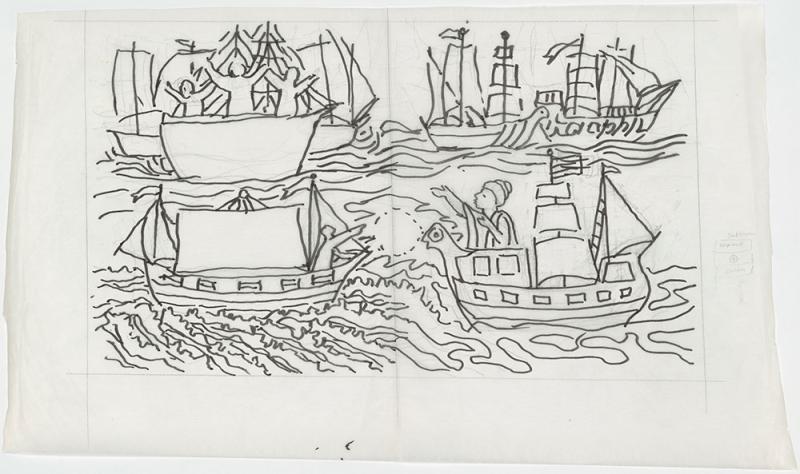
Figure 3: Full-size drawing on tracing paper for Seascape (from Sail Away), 2015. Note the slight differences in the composition of the sails in the upper half between the drawing and the finished collage.
Ashley Bryan (1923–2022). Study for Seascape, 2015. Black porous-point pen and graphite pencil on tracing paper. The Morgan Library & Museum, Gift of the Ashley Bryan Center; 2021.26:12. © 2022 The Ashley Bryan Center.
Bryan meticulously hand-cut each collage shape from a larger piece of paper using his mother's sewing and embroidery scissors and then built-up the image by adhering one shape at a time to the watercolor paper. The personal importance of these scissors is made known to the reader through Bryan's "Illustrator's Note" at the beginning of Sail Away and by the inclusion of the scissors as cut-out photocopies in the endpapers collage. Bryan's choice of adhesive is seen in this photograph, where a blue and white jar of Yes! Paste, an adhesive marketed for use on paper, is close at hand. As a final step, Bryan added a translucent overlay panel to the finished collage to show the placement of the text in the book, as seen here.
COLLAGE PAPERS
A visual comparison of Bryan's collage papers to known samples, focusing on color, texture, and thickness, allowed me to identify papers produced by specific paper mills. Bryan seems to have favored the rich colors of Canson's Mi-Teintes® and Ingres Vidalon® paper lines, mixing in Fabriano Tiziano papers, stationery papers, construction papers, kraft paper, as well as a variety of other types of smooth and textured artist papers. Based on my examinations of the collages and from photographs of his working space, I imagine Bryan had numerous sheets of paper purchased from artist- and office-supply stores stocked in his studio as the raw materials for these collages.
To distinguish Canson Mi-Teintes® from Canson Ingres Vidalon®, I looked at both the color and texture of Bryan's collage papers. Canson produced Mi-Teintes® in roughly fifty colors and Ingres Vidalon® in some of these same colors in the 2000s and 2010s; in 2007 Ingres Vidalon® was sold in eight colors and in 2011 in twelve colors at New York Central Art Supply. The visual difference between the papers is in their textures. Mi-Teintes® is a machine-made wove paper with a pronounced honeycomb texture on one side and a smooth texture on the other side. Ingres Vidalon® is a machine-made laid paper with pronounced laid and chain lines. From my visual examinations of the collages, I recognized that Bryan used canary yellow from both the Mi-Teintes® (color #400) and Ingres Vidalon® (color #46) paper lines, using this rich yellow color in seventeen of the collages, and combining the wove and laid textures in only three. For example, he cut a piece of canary yellow Mi-Teintes® into the circle on the left side of Title page (from Sail Away), 2015, (2021.25:18) and cut a piece of canary yellow Ingres Vidalon® into the yellow band of the sky on the right side.
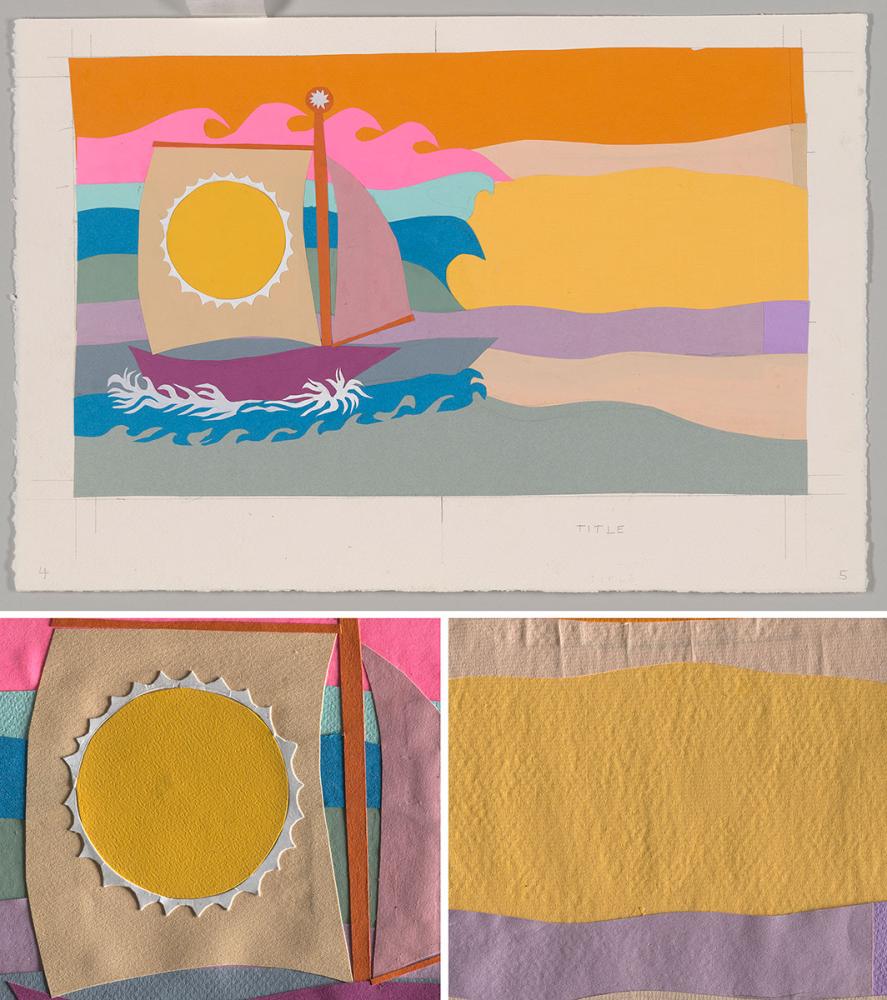
Figure 7: Collage with text overlay lifted up and details in raking light showing the textures of the two canary yellow papers; Canson Mi-Teintes® (color #400) on the left and Ingres Vidalon® (color #46) on the right.
Ashley Bryan (1923–2022). Title page (from Sail Away), 2015. Collage of cut colored papers with graphite pencil on wove paper, with printed text mounted on a tracing paper overlay. The Morgan Library & Museum, Gift of the Ashley Bryan Center; 2021.25:18. © 2022 The Ashley Bryan Center.
Water is a recurring theme in Bryan's collages and an example of his recurring use of specific papers. The aqua paper found in twelve collages is Fabriano Tiziano in acqua marina (color #46).
This is a machine-made wove paper that is textured on both sides, and is distinct from the texture of the Canson Mi-Teintes®. In Long Trip (from Sail Away), 2015, (2021.25:4), Bryan used the aqua Fabriano paper juxtaposed with Canson Mi-Teintes® in turquoise (color #595), royal blue (color #590), and gray-blue (color #354) to represent the swirling waves. These same blue papers are used throughout the collages to represent water in its varied forms.

Figure 9: Collage with text overlay lifted up.
Ashley Bryan (1923–2022). Long Trip (from Sail Away), 2015. Collage of cut colored papers with graphite pencil on wove paper, with printed text mounted on a tracing paper overlay. The Morgan Library & Museum, Gift of the Ashley Bryan Center; 2021.25:4. © 2022 The Ashley Bryan Center.
TECHNICAL IMAGING
To further the study of Bryan's collage papers, I partnered with Elena Basso and Alicia McGeachy from the Network Initiative for Conservation Science (NICS) to capture the reflectance spectra of the colored papers using a hyperspectral camera. The goal was to match the same colored papers to each other and to known samples of Canson and Fabriano papers. Each collage was imaged in the Thaw Conservation Center during two onsite sessions at the Morgan in 2022, and then the data was processed offsite by NICS. Dozens of unique colors were identified with this imaging technique.
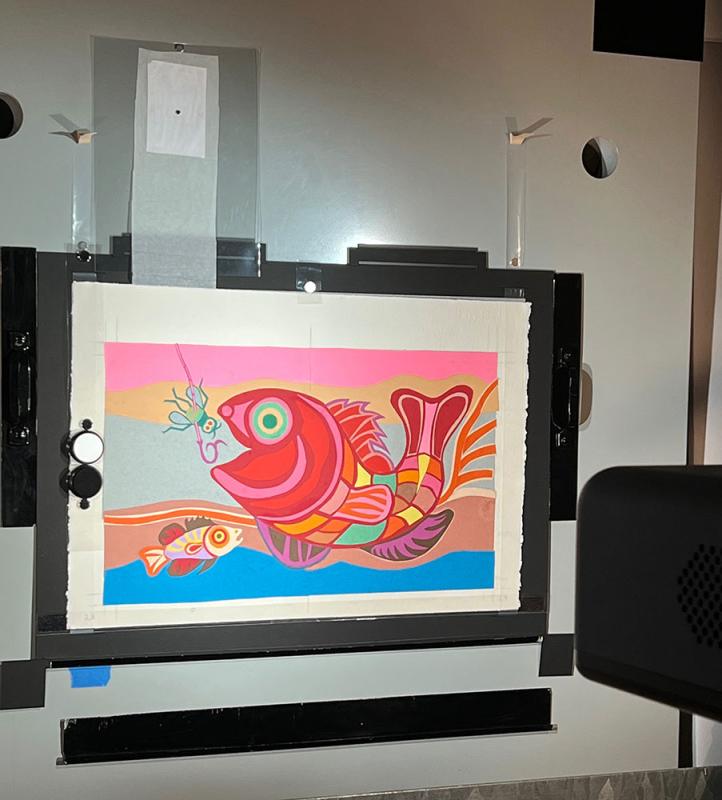
Figure 11: Collage mounted for hyperspectral imaging in the Thaw Conservation Center.
Ashley Bryan (1923–2022). F (from Sail Away), 2015. Collage of cut colored papers with graphite pencil on wove paper, with printed text mounted on a tracing paper overlay. The Morgan Library & Museum, Gift of the Ashley Bryan Center; 2021.25:13. © 2022 The Ashley Bryan Center.
Going back to the example of the aqua paper, this technique confirmed that Fabriano Tiziano in acqua marina (color #46) is present in twelve of the collages. Interestingly, the different colors indicated by the resulting spectra sometimes turned out to be the same paper that was layered over another paper, which shifted the color the camera recorded. And sometimes papers that were indicated to be the same by the spectra were actually different papers that were dyed the same color, as is the case with the Canson canary yellow papers. The camera only sees color, not different textures and thicknesses, so using hyperspectral imaging in conjunction with visual examination was necessary to provide a complete understanding of Bryan's collage papers and to draw the conclusions presented in this post.
IMAGES
Janny Chiu, 2022, figures 1, 2, 3, 4, 6, 7, 8, 9 ; Rose Russo, Newburyport, Massachusetts, figure 5; Lindsey Tyne, 2022, figures 10, 11.
Lindsey Tyne is currently the Conservation Librarian at New York University Libraries. She conducted this research on Ashley Bryan's collages in 2021 and 2022 as the Associate Paper Conservator at the Morgan Library & Museum.


